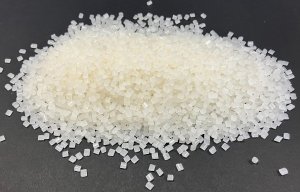
Faster biodegrading PLA
Approaches will be tested in Accra, Ghana, which receives about 15 million used garments each week.

7th December 2021
Innovation in Textiles
|
Missoula, MT, USA
The Biomimicry Institute has been awarded €2.5 million to lead a multi-year initiative called Design for Decomposition. By embracing true decomposition – the way leaves break down into soil to build healthy ecosystems – the initiative aims to demonstrate scalable new pathways for fashion waste. The initiative is a follow-up to the institute’s 2020 report, The Nature of Fashion, which identified decomposition as the missing link for the sector.
Together with Laudes Foundation, the Hong Kong Research Institute of Textiles and Apparel (HKRITA), Yale Center for Green Chemistry and Green Engineering, Metabolic Institute, The OR Foundation, and Celery Design, the Biomimicry Institute will pilot technologies that convert wasted clothes and textiles into biocompatible raw materials. The multi-year Design for Decomposition initiative will host pilots in Western Europe and Ghana, testing the most viable decomposition technologies that are commercially viable but have yet to scale.
The initiative will begin with biological research into the various types and circumstances of natural decomposition and will then match those approaches to the hundreds of known decomposition technologies to determine which work best. In the pilot phase, these approaches will be tested in Accra, Ghana, which receives about 15 million used garments each week, and also in a city like Amsterdam or Berlin with more established waste management infrastructure. Simultaneously, researchers at Yale will be taking a hard look at what really decomposes and how.
Molecular level
“Determining the rate or speed at which molecules degrade in the environment is of crucial importance to assess risks to our own health and the health of the environment,” said Dr Paul Anastas, director of the Center for Green Chemistry and Green Engineering at Yale. “While experiments to assess the biodegradation of chemicals when in the environment have been developed and are routinely carried out, these have several limitations that make it hard to predict the fate of chemicals and materials in the ‘real’ environment. Our goal is to close that gap.”
To avert some of the worst effects of a global industry that produces 100 billion garments each year for a population of 7.5 billion, a new approach is needed for the fashion sector. In the last 25 years, the amount of clothing bought in the EU per person has increased by 40%, following a sharp fall in prices. Europeans on average discard about 11 kilos of clothing every year, with some used items shipped overseas to places like Accra but about 87% incinerated or landfilled, including a large portion of the donated clothes people were hoping would have a second owner. But with landfills closing, new ones too costly to make and incinerators under scrutiny for carbon emissions, a new option – or a very old one –is increasingly necessary.
“Nature has primary producers, consumers and decomposers, and all rely on dispersal and entropy and without all three there is no cadence to life,” said Beth Rattner, executive director of the Biomimicry Institute. “If the fashion sector is going to be a force for good on the planet, it has to follow the same laws of nature. The North Star is not a shirt that becomes another shirt, but a shirt that subsidises the regenerative fashion system we all know is possible.”
With catalytic funding from Laudes Foundation, the initiative is part of its fashion materials portfolio, which supports efforts that inspire and challenge the industry to harness its power for good.
“Demonstrating that decomposition can put fashion back into natural resource cycles will be a powerful proof point for fashion and its allied industries, and a bold step towards reversing the environmental damage the industry has created so far,” said Anita Chester, head of materials at Laudes Foundation. “We are thrilled to support this consortium led by the Biomimicry Institute, and eagerly await the results of their game-changing pilots to scale bio-compatible solutions for the fashion industry at large.”

Business intelligence for the fibre, textiles and apparel industries: technologies, innovations, markets, investments, trade policy, sourcing, strategy...
Find out more